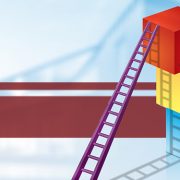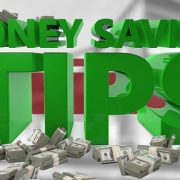Top 10 Truths: Mortgage Insurance
Mortgage Insurance (MI) aka Private Mortgage Insurance (PMI) is a necessary evil in today’s lending environment for many home buyers. Here are the top 10 things to know about mortgage insurance:
- What is Mortgage Insurance?
Mortgage insurance, aka MI, is an insurance policy which compensates the lenders or investors for losses due to the default of a mortgage loan. If a borrower defaults on the mortgage, the lender or investors is paid back a portion of the loan balance.
- Why do I pay Mortgage insurance?
Loans requiring mortgage insurance are considered higher-risk. Put 20% down on a conventional loan and pay no MI.
- When do I pay Mortgage Insurance?
There are two types of loans that charge MI: Conventional Loans and FHA Loans.
Conventional loans typically require mortgage insurance when down payments are below 20%. More factually, mortgage insurance is required with the 1st mortgage is over 80% loan-to-value.
FHA 30-Year loans require mortgage insurance on all loans regardless of the down payment amount. As of June 3, 2013, the monthly mortgage insurance remains for the life of the loan – for loans over 90% loan-to-value, i.e. when the borrower puts less than 10% down.
- How do I avoid paying Mortgage Insurance?
Put 20% down on a conventional loan or chose a 1st and 2nd loan combo. No FHA.
- How do I pay the Mortgage Insurance?
Mortgage insurance is charged two ways: Monthly-Paid or Single-Paid. Monthly-Paid MI charges on a monthly basis. Single-Paid MI charges a one-time fee at the close of escrow as part of the closing costs.
- What determines how much Mortgage Insurance I pay?
FICO score and down payment are the two main factors to determine the cost of mortgage insurance. Higher FICO scores and a larger down payment = lower MI costs. A high FICO score will lower the mortgage insurance premiums dramatically.
- Mortgage insurance Cost
FHA charges 1.30% annually on average.
Monthly-Paid MI costs 0.70% on average.
Single-Paid MI costs 2.5% on average.
Actual charges vary.
- How to get rid of Mortgage Insurance?
The US Homeowners Protection Act of 1998 allows for borrower to require PMI cancelation when the amount owed is reduced to a certain level, most commonly = 80% loan-to-value. This is for conventional loans only as FHA charges MI on every loan. The only way to ever get rid of MI on FHA loans is to refinance out of FHA and into a conventional loan. Paying down the loan balance or property values increasing are the two ways to get rid of mortgage insurance.
Is MI tax deductible?
No. As of Dec 31, 2013 mortgage insurance the IRS longer tax deductible.
9. Who pays the MI?
Three parties are allowed to pay the MI.
- Borrowers (you).
- Sellers.
- Lenders
10. Lender and Seller Credits
Lending guidelines allow sellers and lenders to give limited credits to be applied to the borrowers closing costs. To pay off the mortgage insurance entirely, typically the borrower chooses the Single-Paid MI option and negotiates with the seller or lender to cover the cost.
Seller Credits have to be negotiated as part of the contract negotiations between the buyer and seller. Lenders have the ability to generate Lender Credits by increasing the borrower’s interest rate on most loan products and in most cases. On average, a 0.50% increase to the rate generates enough credits to pay the cost of the Single-Paid MI fee. The benefit to increasing the interest rate and eliminating the mortgage insurance payment is an overall lower monthly payment.
In conclusion, nobody likes mortgage insurance but the alternative is to either make a larger down payment or not buy at all. VA loans do not charged mortgage insurance but one must be a Veteran. Good news! Go enlist for 4 years with the US Military, Army or Navy and pay no mortgage insurance on your next loan.











